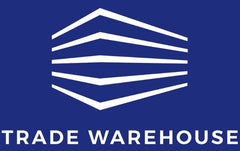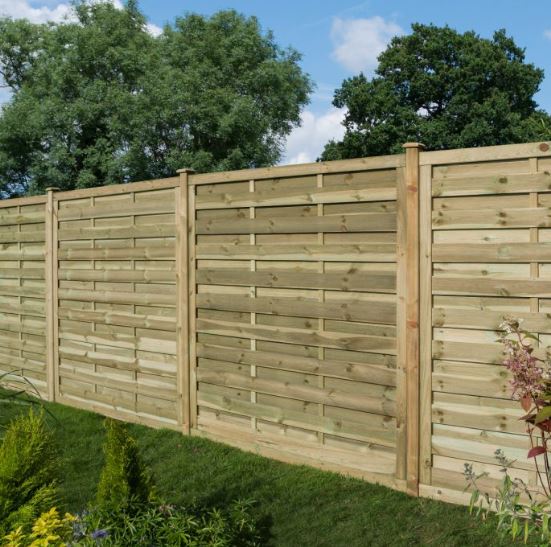Fencing is a crucial aspect of any outdoor space, serving both functional and aesthetic purposes. Whether you're looking to enhance your garden's privacy, increase security, or simply give your yard a fresh look, understanding the cost to install garden fence panels is essential.
This comprehensive guide will walk you through everything you need to know, from the average costs involved to the various factors that can influence your final bill. Read on to discover how you can effectively plan and budget for your new fence.
Understanding the Costs
When planning to install a new fence, it's essential to understand the primary cost components: materials and labour. Both these factors significantly impact your overall expenses:
- Materials: This includes the cost of the fence panels, posts, and any additional materials required.
- Labour: Professional installation costs, which can vary based on the complexity of the job and regional differences.
Average Costs Breakdown:
-
Fence Installation:
- 4 ft: £1,450
- 6 ft: £1,850
-
Fence Panels:
- £45-£55 per panel
These costs can fluctuate based on various factors, including the type and quality of the materials you choose and the specifics of your installation project.
Types of Fence Panels and Their Costs Explained
Fence panels come in a variety of styles and materials, each with its own cost implications.
Lap Fence Boards:- Basic and affordable option.
- Cost per panel: £30 - £60 (Average: £45)
- Decorative and sturdy.
- Cost per panel: £35 - £70 (Average: £52.50)
- Popular for its durability and traditional look.
- Cost per panel: £50 - £70 (Average: £60)
- Common in rural areas, not very durable but inexpensive.
- Cost per foot: £5 - £14 (Average: £9.50)
- Affordable and easy to install.
- Cost per foot: £8 - £12 (Average: £10)
- Essential for support.
- Cost per post: £15 - £36 (Average: £25.50)
Key Takeaway: 💡 Different types of fence panels vary widely in cost. Choose a type that fits both your budget and aesthetic preferences for the best results.
Factors Affecting Fence Installation Costs
Several factors can affect the total cost of installing a fence. Being aware of these can help you better estimate your expenses and plan accordingly.
Number of Panels Needed:- The size of your garden and the length of the fence will determine the number of panels required.
- Taller fences are more expensive. For example, a 36-foot-long fence with 4-foot-high panels costs £1,450, while the same length with 6-foot-high panels costs £1,850.
- Higher quality materials are more durable but also more expensive.
- The material and style of the fence can significantly impact costs. Custom-designed metal fences are much pricier than simple wooden fences.
- Additional treatments like painting or staining can increase costs.
- Hard-to-reach areas or uneven surfaces can raise installation costs.
Key Takeaway: 💡 Multiple factors, including the size, height, and quality of the fence, can affect your installation costs. Consider these elements when planning your project to ensure a realistic budget.
Additional Costs to Consider
Beyond the basic costs of materials and labour, several additional expenses can arise during a fence installation project. It's essential to account for these to avoid surprises.
Fence Painting:- Professional painting can cost around £170 - £270.
- Unless included in the installation service, you may need to hire a waste removal company.
- Landscaping or other garden work might be necessary alongside your new fence.
- Adding a gate for security and access can add to the cost.
- Regular upkeep and occasional repairs are necessary to extend the life of your fence.
How to Reduce Fence Installation Costs
Staying within budget can be challenging, but there are several strategies you can use to keep costs down without sacrificing quality.
-
Determine the Purpose of Your Fence:
- Decorative fences can be cheaper than security fences.
-
Consider Alternative Materials:
- Look for more affordable materials that still meet your needs.
-
Share Costs with Neighbours:
- If you share a boundary, consider splitting the cost with your neighbour.
-
DIY Installation:
- If you have the necessary skills, you can save on labour costs by installing the fence yourself. However, consider the risks and difficulty involved.
Key Takeaway: 💡 By carefully considering the purpose, materials, and installation methods for your fence, you can find ways to reduce costs and stay within your budget.
Common Types of Fences
Choosing the right type of fence is crucial for meeting your functional and aesthetic needs. Here’s a brief overview of the most common types of fences.
-
Wooden Fences:
- Cost-effective and versatile, but require regular maintenance.
-
Metal Fences:
- Durable and strong, ideal for security but more expensive and complex to install.
-
Plastic Fences:
- Easy to maintain, but less durable and not easily painted.
-
Composite Fences:
- Resemble wood and are low-maintenance, but come with a higher price tag.
Key Takeaway: 💡 Each fence type has its own set of advantages and disadvantages. Choose based on your specific needs and budget to get the most value from your investment.
Why Install a New Fence?
There are numerous reasons why you might consider installing a new fence. Here are some of the most common motivations:
-
Increase Privacy:
- A well-placed fence can make your garden more secluded.
-
Enhance Security:
- Fences can deter intruders and protect your property.
-
Define Outdoor Spaces:
- Fences can help create separate zones within your garden.
-
Aesthetic Improvements:
- A new fence can refresh the look of your outdoor area.
-
Replace Old or Damaged Fences:
- Updating worn-out fences can improve both appearance and functionality.
Key Takeaways
To wrap up, here are some essential points to remember when planning your fence installation:
-
Material and Style:
- Fencing comes in various materials and styles. Research thoroughly to choose the right one for your needs.
-
Professional Installation:
- Professional installation ensures durability and quality, despite higher upfront costs.
-
Affordable Options:
- Post and rail, and chain link fencing are among the most cost-effective choices.
-
Most Common Type:
- Featherboard wooden fencing is a popular and versatile option.
Key Takeaway: 💡 Thorough research and careful planning are crucial when selecting the right fence and installer. Make informed decisions to achieve the best results within your budget.
FAQs and Fast Facts
-
What is the average cost to install fence panels?
- £1,450 for 4 ft, £1,850 for 6 ft.
-
What factors affect fence installation costs?
- Number of panels, height, quality, type, finish, and location.
-
How can I reduce installation costs?
- Consider alternative materials, share costs with neighbours, and evaluate DIY options.
-
What are the common types of fences?
- Wooden, metal, plastic, and composite fences.
Fast Facts:
- Average fence panel cost: £45 per panel.
- Labour costs for installation: £1,600 (4 ft) - £2,200 (6 ft).
- Most common type of fencing: Featherboard wooden fencing.
Conclusion
Planning and installing a new fence involves several considerations, from understanding costs to choosing the right materials and installer.
By following this guide, you can make informed decisions that will enhance your outdoor space while staying within your budget.

